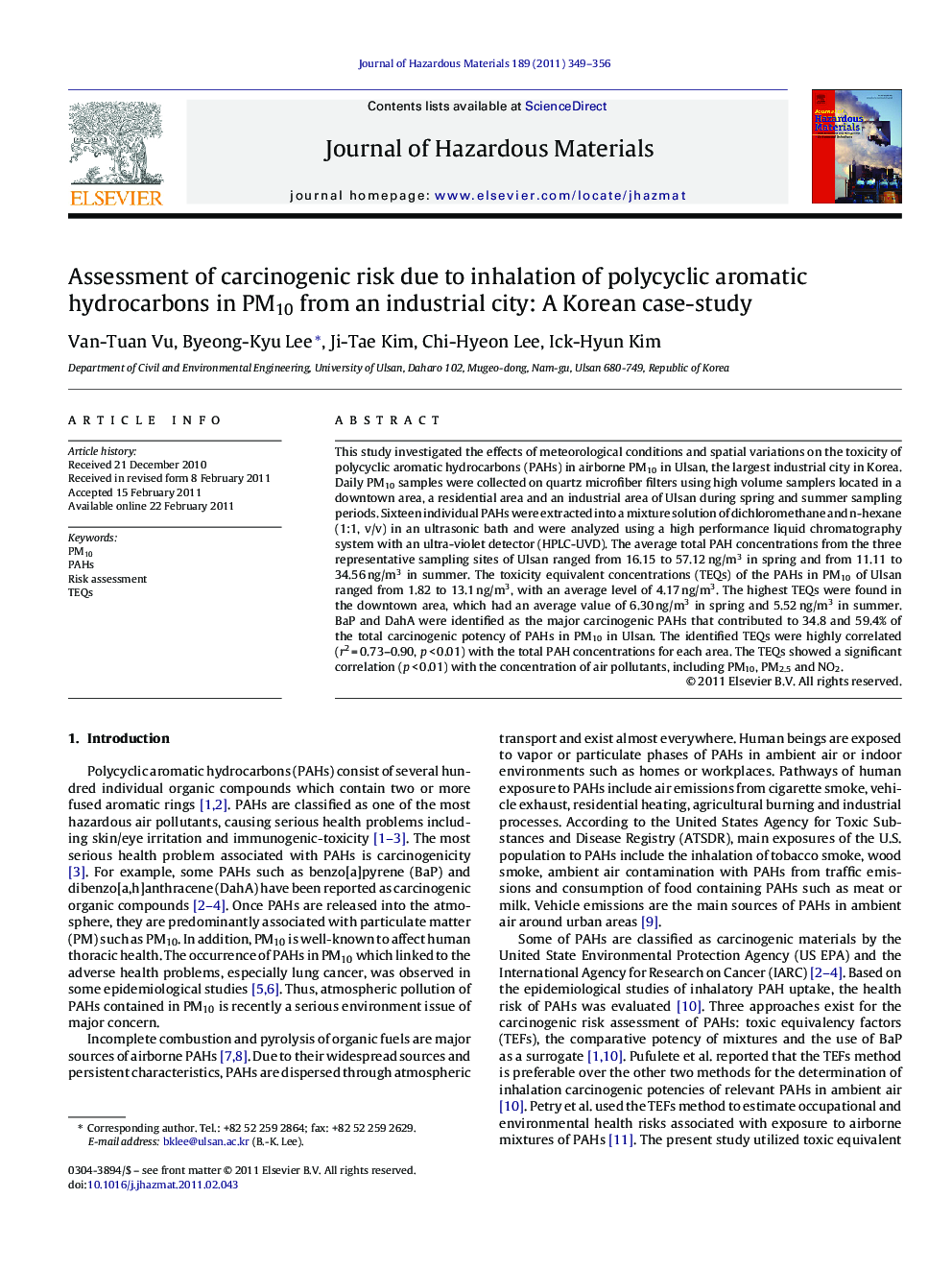| Article ID | Journal | Published Year | Pages | File Type |
|---|---|---|---|---|
| 579379 | Journal of Hazardous Materials | 2011 | 8 Pages |
Abstract
This study investigated the effects of meteorological conditions and spatial variations on the toxicity of polycyclic aromatic hydrocarbons (PAHs) in airborne PM10 in Ulsan, the largest industrial city in Korea. Daily PM10 samples were collected on quartz microfiber filters using high volume samplers located in a downtown area, a residential area and an industrial area of Ulsan during spring and summer sampling periods. Sixteen individual PAHs were extracted into a mixture solution of dichloromethane and n-hexane (1:1, v/v) in an ultrasonic bath and were analyzed using a high performance liquid chromatography system with an ultra-violet detector (HPLC-UVD). The average total PAH concentrations from the three representative sampling sites of Ulsan ranged from 16.15 to 57.12 ng/m3 in spring and from 11.11 to 34.56 ng/m3 in summer. The toxicity equivalent concentrations (TEQs) of the PAHs in PM10 of Ulsan ranged from 1.82 to 13.1 ng/m3, with an average level of 4.17 ng/m3. The highest TEQs were found in the downtown area, which had an average value of 6.30 ng/m3 in spring and 5.52 ng/m3 in summer. BaP and DahA were identified as the major carcinogenic PAHs that contributed to 34.8 and 59.4% of the total carcinogenic potency of PAHs in PM10 in Ulsan. The identified TEQs were highly correlated (r2 = 0.73-0.90, p < 0.01) with the total PAH concentrations for each area. The TEQs showed a significant correlation (p < 0.01) with the concentration of air pollutants, including PM10, PM2.5 and NO2.
Keywords
Related Topics
Physical Sciences and Engineering
Chemical Engineering
Chemical Health and Safety
Authors
Van-Tuan Vu, Byeong-Kyu Lee, Ji-Tae Kim, Chi-Hyeon Lee, Ick-Hyun Kim,
